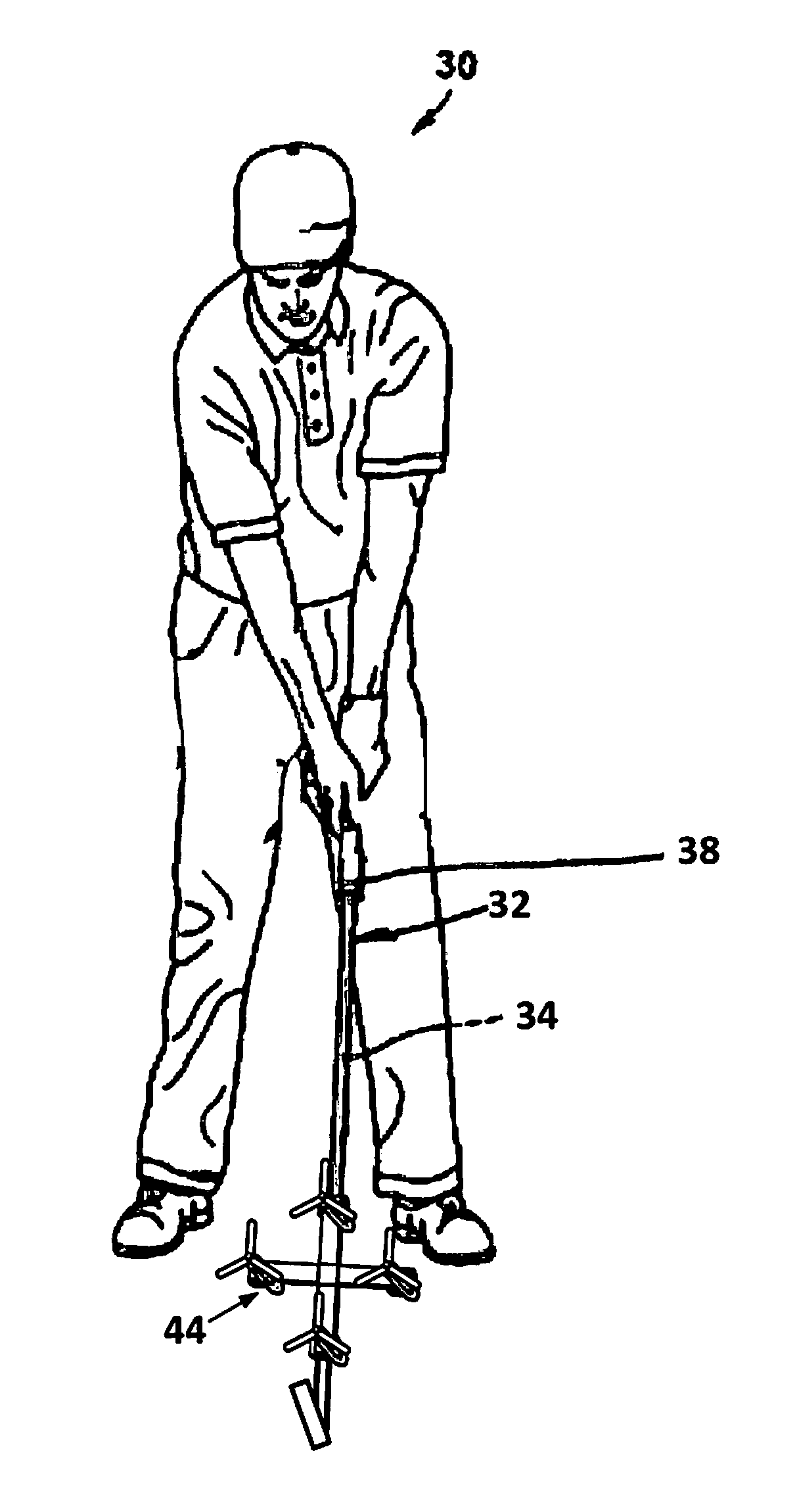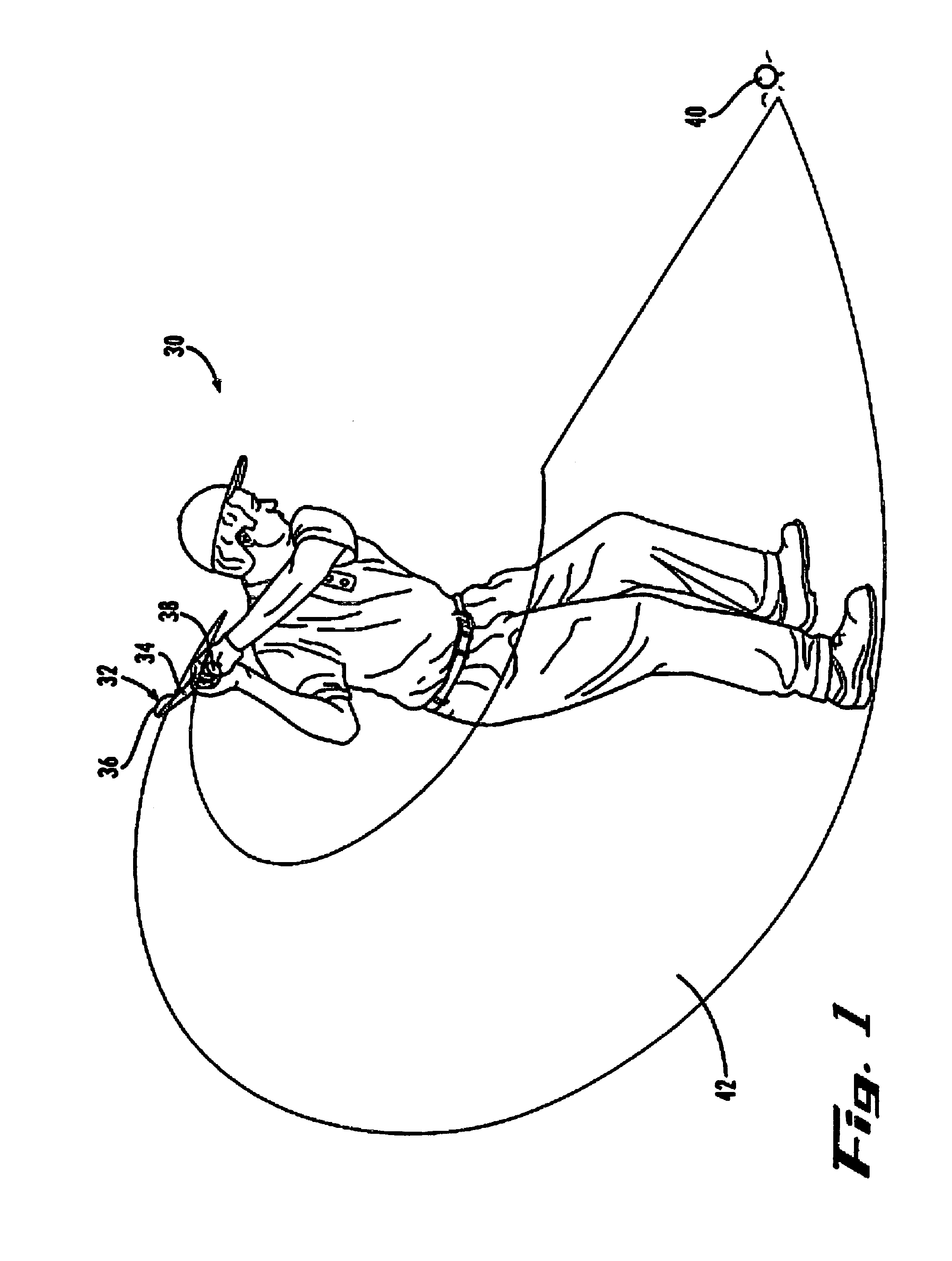Multi-Rotor Apparatus and Method for Motion Sculpting
a multi-rotor apparatus and motion sculpting technology, applied in the field of muscle trainers and methods of exercising muscles, can solve the problems of undesirable dominant muscle condition and its attendant disadvantages, and achieve the effect of convenient manipulation and managemen
- Summary
- Abstract
- Description
- Claims
- Application Information
AI Technical Summary
Benefits of technology
Problems solved by technology
Method used
Image
Examples
Embodiment Construction
[0123]Referring to FIG. 1, a golfer 30 has completed a backswing of a golf club 32, with the club being at the peak of the backswing, or backswing-completion position, and poised for the beginning of a downswing of the club, in anticipation of the completion of a full stroke. The club 32 includes a club shaft 34 extending between a distal end and a proximal end thereof. A club head 36 is mounted on the distal end of the shaft 34, and a grip 38 is formed about a portion of the shaft at or near the proximal end of the shaft.
[0124]The grip 38 typically extends from its outboard end disposed at the proximal end of the shaft 34 towards the distal end of the shaft, and terminates at an inboard end of the grip along an intermediate portion of the shaft. In preparation for swinging the club 32, the golfer 30 positions the golfer's hands on the grip 38 in a conventional club-gripping manner, whereby the thumb of one hand, for example, the right hand, is closer to the inboard end of the grip ...
PUM
 Login to View More
Login to View More Abstract
Description
Claims
Application Information
 Login to View More
Login to View More - R&D
- Intellectual Property
- Life Sciences
- Materials
- Tech Scout
- Unparalleled Data Quality
- Higher Quality Content
- 60% Fewer Hallucinations
Browse by: Latest US Patents, China's latest patents, Technical Efficacy Thesaurus, Application Domain, Technology Topic, Popular Technical Reports.
© 2025 PatSnap. All rights reserved.Legal|Privacy policy|Modern Slavery Act Transparency Statement|Sitemap|About US| Contact US: help@patsnap.com



